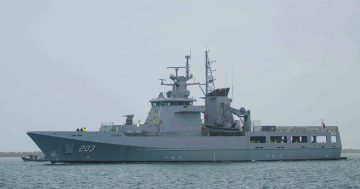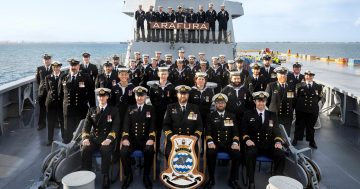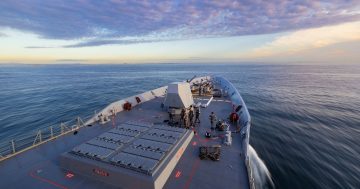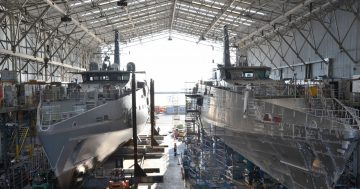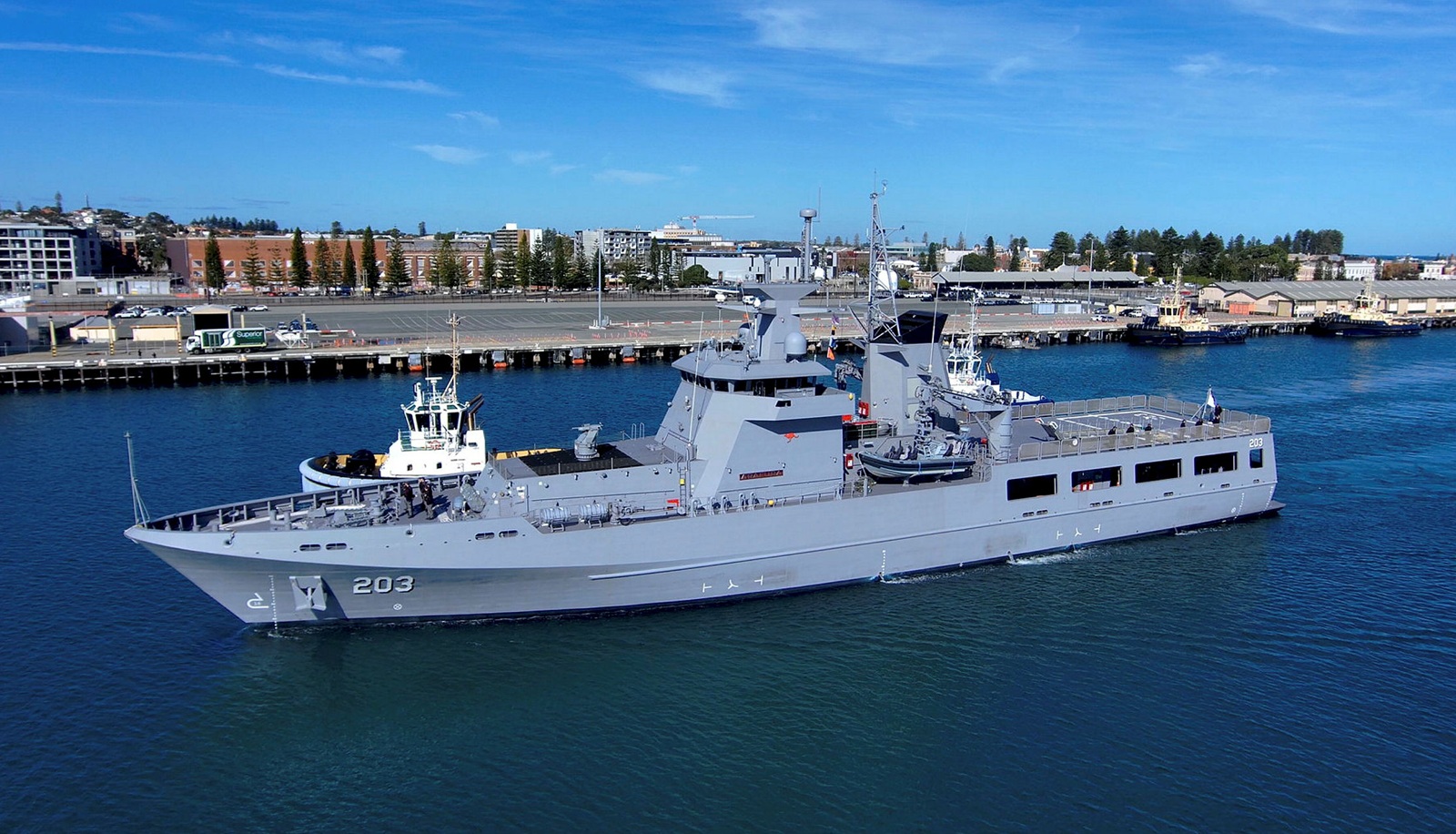
The first of six OPVs, HMAS Arafura was commissioned in July 2025. Photo: ADF.
One of the more interesting exhibits at the Indo-Pacific International Maritime Exposition in Sydney was an unsolicited proposal by WA-based engineering firm and shipbuilder Civmec to provide a series of low-risk upgrades to the Royal Australian Navy’s (RAN’s) Arafura-class offshore patrol vessels (OPVs).
The OPVs were acquired under Project SEA 1180 Phase 1, with the resulting Arafura class being based on Luerssen’s PV 80 design and the Darussalam-class OPV, which is in service with the Royal Brunei Navy.
Being close to a corvette in size, the 1600-tonne Arafura class is a new type of ship for the RAN, sitting roughly between the 300-400-tonne Armidale/Cape-class patrol boats and the larger, 3600-tonne Anzac-class frigates.
The first-of-class vessel, HMAS Arafura was commissioned into navy service in July 2025. A second vessel, NUSHIP Eyre, is currently undergoing proving trials, while a third, NUSHIP Pilbara, was launched in late October. Three more OPVs are in various stages of build at Civmec’s Henderson facility south of Fremantle.
While a requirement for 12 vessels was originally articulated, this was cut to just six in the 2023 Defence Strategic Review (DSR). Up to four additional vessels based on the OPV were also planned to fulfil the vital marine survey and mine-warfare missions, but these were also quietly dropped in the DSR without a replacement in sight.
The DSR also saw the OPV’s mission relegated from that of a Tier 3 surface combatant to a constabulary one in support of Border Force and fisheries patrols.
Some of the reasons for adding the project to the Federal Government’s projects of concern list in 2023 were issues with making the vessels meet the ADF’s stringent compliance rules and integration problems with the planned 40-millimetre main-deck gun. The plan to build the first two vessels at Osborne before switching production to Civmec at Henderson also impacted the project’s schedule.
The project was also delayed due to the COVID-19 pandemic, which affected the shipbuilding workforce at Osborne in South Australia and at Henderson, the wider global supply chain, and the project’s budget.

A model of an Arafura-class OPV at Indo-Pac showing the proposed new main-deck gun (right), containerised NSM launchers (centre) and drone launch systems (left) in orange. Photo: Andrew McLaughlin.
But ground has since been reclaimed on the project, with the installation of a smaller, 25 mm Bushmaster gun and the sale of Luerssen Australia’s shipbuilding business to Civmec.
With that in mind, Civmec displayed a model of what it calls an ‘’Arafura Capability Enhancement’’ at Indo-Pac. This comprises the integration of a larger main-deck gun, containerised launch systems for reconnaissance drones or loitering munitions, a rear-facing Kongsberg Naval Strike Missile (NSM) capability with a containerised control centre, and an anti-submarine warfare (ASW) capability in the form of a towed Thales CAPTAS 1 variable-depth sonar.
The Arafura class’s mission deck and large rear flight deck allow for the relatively easy water-level or craned loading and unloading and accommodation of these systems, depending on mission requirements. Civmec says the only real modifications the vessels would require are additional tie-down points on the flight deck for the containerised systems, and a software upgrade to the vessels’ combat system.
Company representatives told Region that it was not promoting the OPVs for a Tier I or 2 surface-combatant-style role within the RAN. Rather, it says, if taken up, they could play a vital support role in littoral operations and near major ports or other strategic assets while the navy’s frigates and destroyers are deployed further forward.
While there is no active requirement within the navy for such an upgrade, if it were to be adopted, it may also open the possibility of an extended production run of the class.
This would not only add capability, but may also help bridge a looming shipbuilding production gap at Henderson between the completion of the current six Arafura-class vessels in late 2026 and construction of the first of up to eight Australian-built Project SEA 3000 general-purpose frigates based on Japan’s Upgraded Mogami class from 2028/29.


